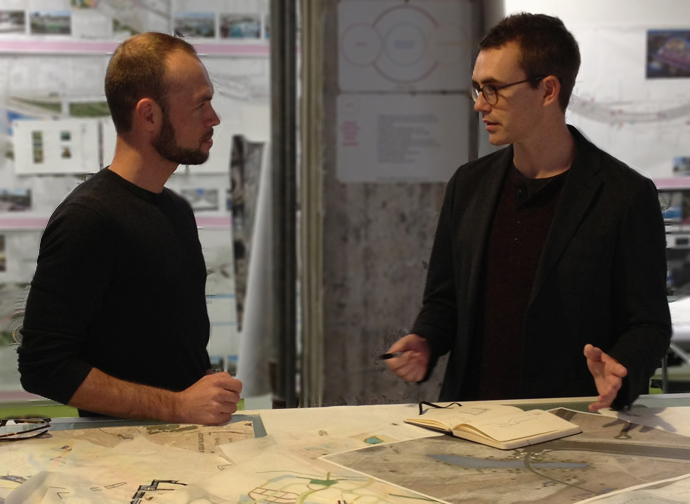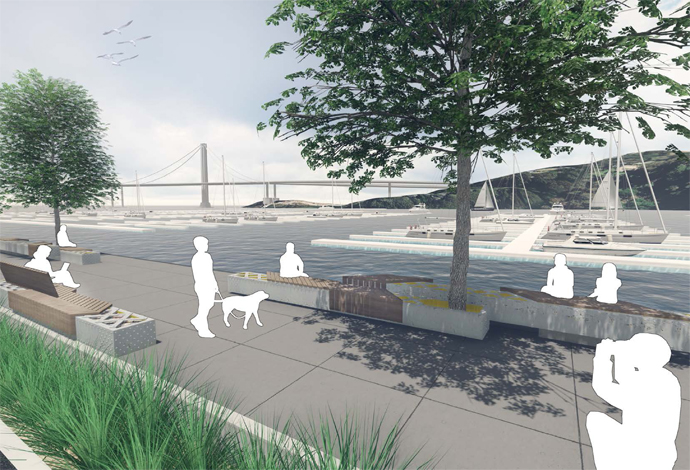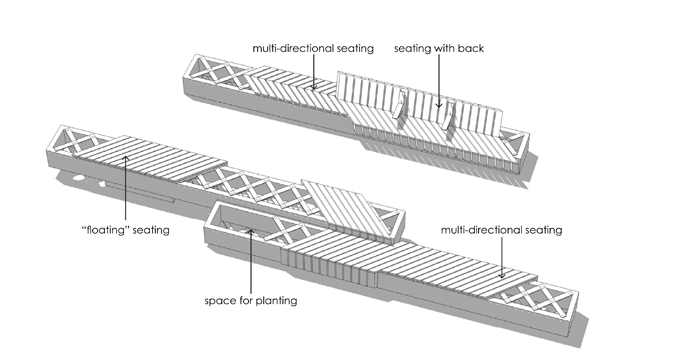Pieces of Bay Area’s past become art of its future
If you live in the San Francisco Bay Area, you’re used to seeing a lot of change. Businesses have turned over; old neighborhoods have changed character; new neighborhoods are springing up; Salesforce Tower is rising to replace the Transamerica Building as the Bay’s tallest. With all this growth we’re concerned about preserving character, identity and history while making the Bay Area affordable, inclusive and resilient.
The Oakland Museum of California set out to see physical pieces of the Bay Area’s past incorporated into its future. They launched a competition to creatively repurpose steel trusses from the old eastern span of the Bay Bridge, which has been gradually dismantled following completion of the new span in 2013. Fifteen different design proposals were selected for implementation.
One of them comes from Hogan Edelberg, an East Bay native and designer with the San Francisco landscape architecture studio of AECOM. The studio is leading the design for two pieces of waterfront in the Treasure Island redevelopment. Providing 8,000 housing units, a quarter of them below market rate, Treasure Island is a big part of San Francisco’s effort to address its housing shortfalls and affordability issues. The plan includes measures to prioritize and facilitate public transit along with ample open space.

Hogan Edelberg, AECOM landscape designer (right), and Blake Sanborn, AECOM landscape architecture principal (left).
Hogan incorporated the re-claimed steel into the design for Clipper Cove Promenade, where it will serve as sculptural public seating. Part of the Bay Trail, the half-mile promenade faces the marina and is designed for pedestrian and cycle traffic. Bioretention cells along its length will collect and treat stormwater before it reaches the bay. The landscape is designed to cope with rising sea levels and seismic events.

“This design transforms the steel from distant objects to tangible pieces of the landscape,” said Hogan. “I want them to be used functionally, and to reinforce the connection between Treasure Island and the original Bay Bridge. People using this piece of the Bay Trail will be able to experience these pieces of history in a new way.”
In Hogan’s design, the trusses are arranged to recall the movement of cars on the bridge while reinforcing the movement of pedestrians along the promenade. Some of the trusses will “float” above the ground to recall their original position high above the water and allow shadows to play on the ground as well as underneath lighting at night.

Wood cladding creates the seating surfaces while leaving parts of the truss exposed, enhancing the structural pattern of the trusses and creating varied seating opportunities.
Hogan’s other work in the Bay Area includes the Upper Yosemite Creek Daylighting, part of the San Francisco Public Utilities Commission’s Sewer System Improvement Plan, which uses green infrastructure to improve water quality and urban public space, and the Ocean Beach Master Plan, which re-envisions the future of San Francisco’s coastline in the face of rising sea levels.
Thoughtful design can offer us a moment of connection with the past that makes us feel more at home in our future city.






